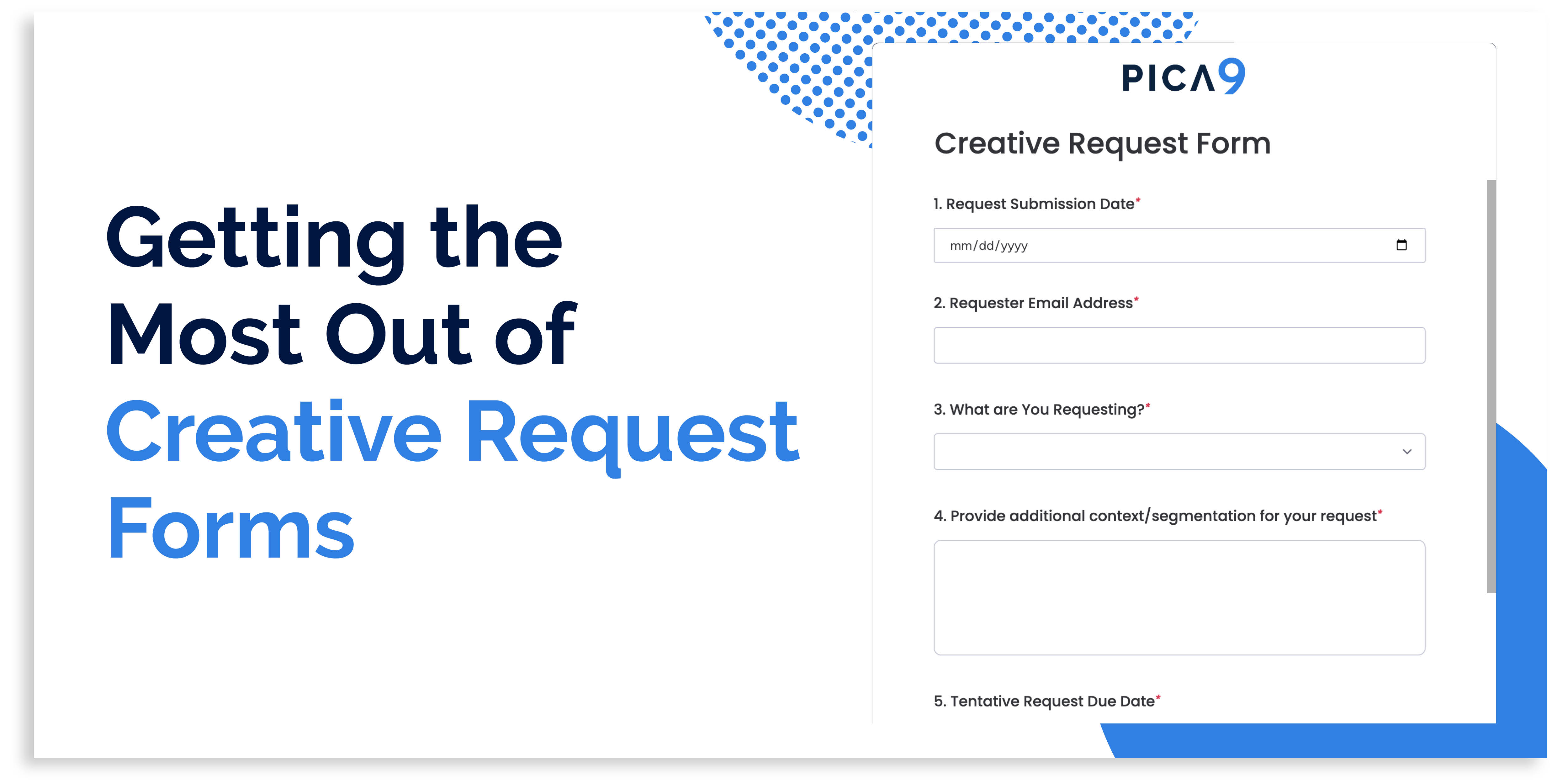In the dynamic landscape of modern business, one thing remains constant: change. As organizations evolve, so do their strategies for creative output. One significant shift we're witnessing is the move towards in-house agency workgroups. Central to this transformation is the implementation of creative request forms. In this guide, we delve into the intricacies of creative request forms, exploring their purpose, value, pitfalls, and the tools needed to build and maintain an efficient creative request environment.
What is a Creative Request Form?
At its core, a creative request form is a structured document designed to facilitate the process of requesting creative services within an organization. Its primary purpose is to clarify and organize a user's thoughts regarding their requirements, guiding them through an established path. A well-designed form prompts users to start with a clear objective, ensuring that the request is comprehensive, clear, and complete. Additionally, it enables the efficient prioritization and routing of requests, leading to streamlined workflows and improved productivity.
For organizations lacking the time or resources to develop custom forms using tools like Google Forms, email communication often becomes the default method of handling creative requests. However, this approach can lead to inefficiencies, with requests scattered across various email threads and lacking a standardized format.

The Value of Creative Services Request Forms
The adoption of creative request forms brings numerous benefits to organizations:
1. Clarity and Organization: By structuring requests, creative request forms promote clarity and organization, reducing ambiguity and ensuring that all necessary information is provided upfront.
2. Efficiency: Streamlined workflows result in faster turnaround times, allowing teams to handle requests more effectively and meet deadlines consistently.
3. Prioritization: By categorizing and prioritizing requests, creative request forms help teams focus on high-impact projects, maximizing resources and achieving better outcomes.
4. Consistency: Standardized request formats ensure consistency in communication and project management, minimizing errors and misunderstandings.
5. Data Insights: Creative request forms generate valuable data insights that can inform decision-making, identify trends, and optimize processes over time.
Despite these benefits, organizations may encounter pitfalls in the implementation of creative request forms, including:
- Resistance to Change: Employees accustomed to traditional methods may resist adopting new processes, leading to challenges in adoption and utilization.
- Incomplete or Inaccurate Requests: Without clear guidance, users may submit incomplete or inaccurate requests, resulting in delays and rework.
- Overcomplication: Overly complex forms may deter users from submitting requests, defeating the purpose of streamlining workflows.
Assessing Maturity Levels
To gauge the maturity of your creative request process, consider the following levels:
- Level 0: No formal request process in place.
- Level 1: Basic form implementation, primarily serving as an alert mechanism with standard questions.
- Level 2: Enhanced form with logic-driven follow-up options based on user responses, facilitating more tailored requests.
- Level 3: Integration with a database, enabling the creation of structured records for each request.
- Level 4: Integration with project management tools for seamless workflow management and tracking.
- Level 5: Advanced self-service capabilities with a library of templates and a logic-driven request form accessible to users.
Tools for Building and Maintaining a Creative Request Environment
To establish an efficient creative request environment, organizations require three essential components:
1. Form Building Tool: Platforms like Google Forms, Typeform, or JotForm enable the creation of customized request forms tailored to specific organizational needs.
2. Data Collection Apparatus: Integration with data collection tools such as Google Sheets, Airtable, or dedicated CRM systems ensures that all request data is captured accurately and securely.
3. Workflow Management System: Utilizing project management tools like Asana, Trello, or Monday.com enables the efficient management of requests from inception to completion, ensuring accountability and visibility at every stage of the process.
Efficient Creative Operations With CampaignDrive by Pica9
At maturity level 5, organizations should also invest in a templating system, like CampaignDrive by Pica9, to facilitate self-service and streamline repetitive tasks. By providing users with access to pre-approved templates, organizations empower teams to initiate requests independently, reducing dependency on manual intervention. Click here to request a demo or watch the short 2-minute explainer video below.
In conclusion, creative request forms serve as invaluable tools in modern organizations, facilitating streamlined workflows, enhancing communication, and driving efficiency. By assessing maturity levels and leveraging the right tools, organizations can build and maintain a robust creative request environment, empowering teams to deliver impactful creative solutions effectively and efficiently in an ever-evolving landscape.




